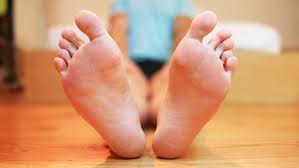My Foot is Killing Me!

The Truth About Vertigo
January 14, 2016
How’s the Balance in your life?
February 1, 2016We’ve all had it. You wake up, put your foot on the floor and feel like you are stepping on spikes. You limp for a few minutes and although you think it’s starting to feel better, the pain appears later in the day after you’ve been sitting for a while. Your discussion with friends, consultation with the internet and your physician confirm you’ve got “Plantar Fasciitis.” This is a diagnosis made in epic proportions. I’ve seen it in all age groups and body types – an Olympic sprinter, a soccer mom, a professor or an active senior, all limping due to foot pain.
Fascia is fibrous tissue that binds structures together. The foot has a chunk of it that attaches your heel to your toes. It can get irritated with overuse, impact injuries and can even tear as we recently saw with Peyton Manning. Most of my clients that have been diagnosed with plantar fasciitis are not playing a professional sport, nor did they start a new exercise program, or experience an impact injury.
So what is this pain? The human foot has 26 joints and more than 100 ligaments. It is one of the most biomechanically complex parts of the human body; offering flexibility and rigidity in the same step. It is often the victim of our body’s failure to stay synchronized when walking. Any disruption of the angle in which your foot strikes the ground, pushes off, or changes in your weight distribution, can result in irritation of the foot. In my experience, unless there has been an actual foot injury, the foot itself is rarely the culprit in foot pain.
Conventional treatment includes a cortisone injection, orthotics and stretching which only offers temporary relief at best. There’s a financial drain as well after you’ve seen multiple specialists, purchased new shoes and custom orthotics and invested in the dreaded sock designed to stretch your foot at night. Find an experienced PT that is equipped to perform a full and detailed biomechanical exam of not only your foot, but your knee, hip and back. The focus of your treatment should be to find the cause of the symptoms in addition to treating your irritated foot, or you’ll never receive any long term relief of that annoying pain.
– Dina Kramer
Kramer Physical Therapy
Knoxville, Tennessee

